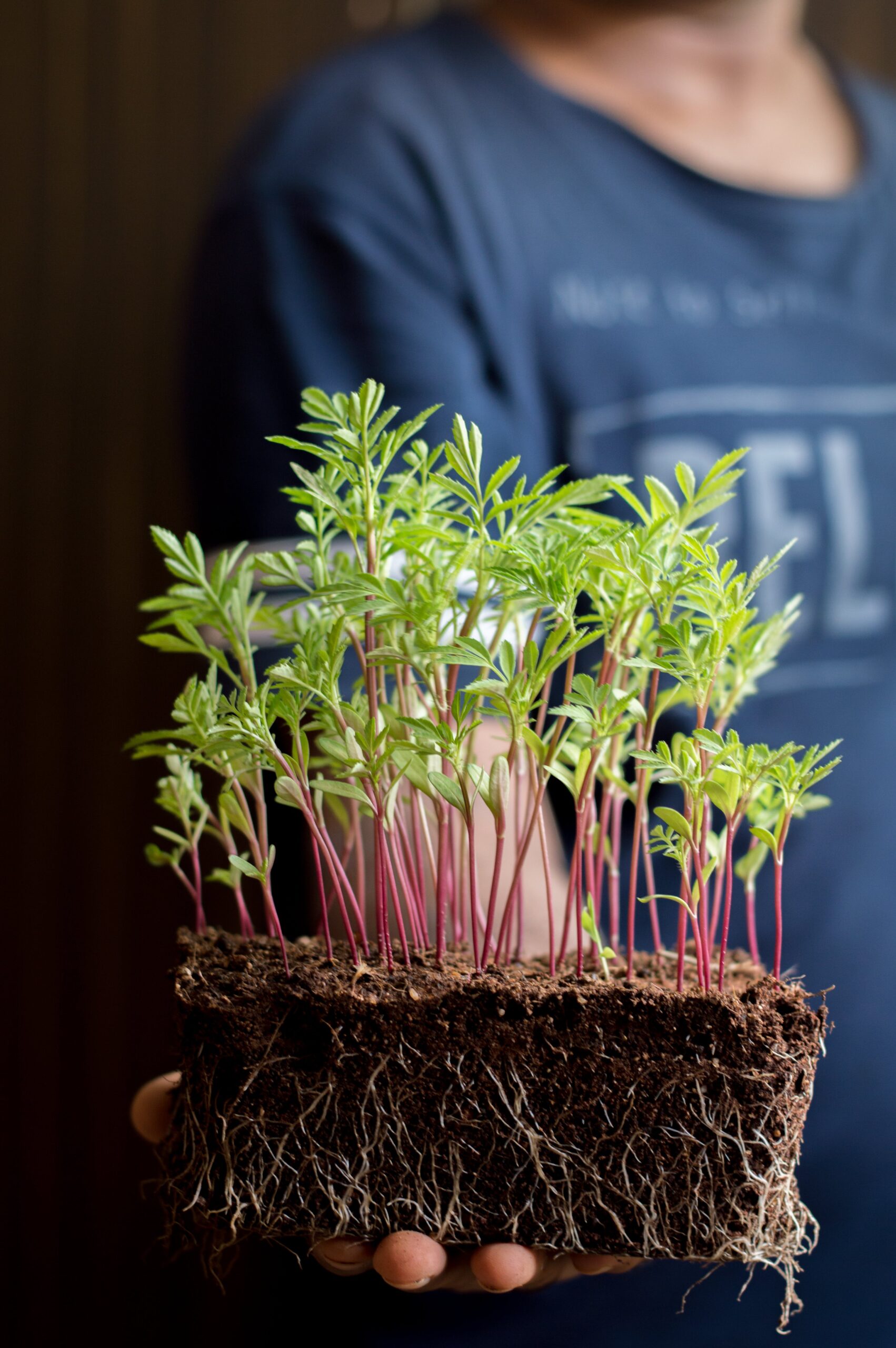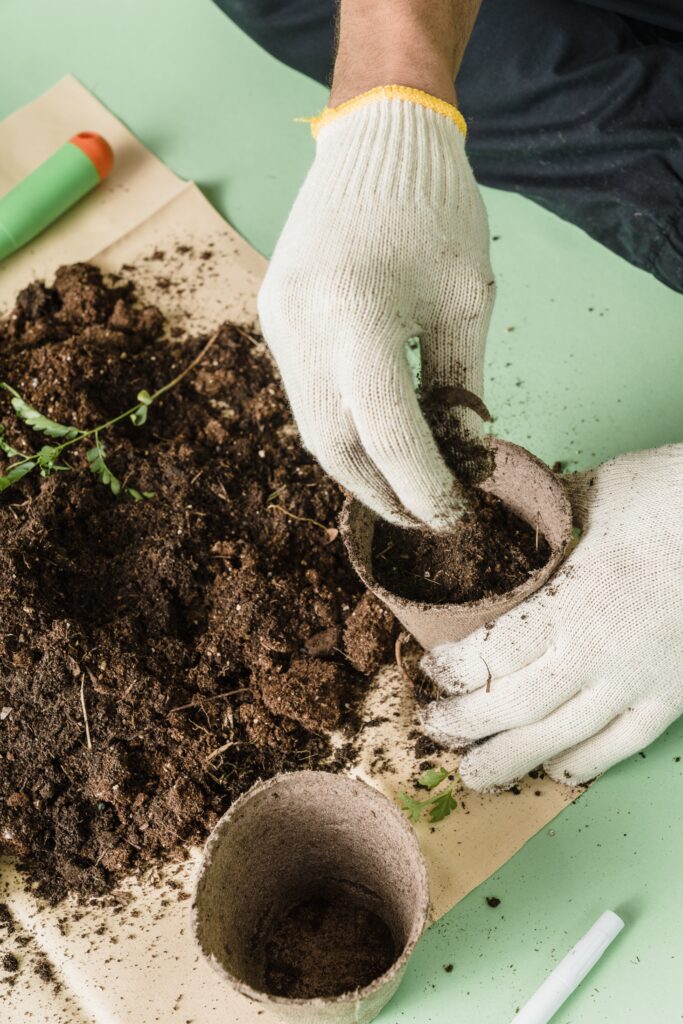Composting in small apartments can be both rewarding and manageable with the right approach. Here are 15 of the best ways to compost in small spaces:
- Vermicomposting
- Bokashi Composting
- Countertop Compost Bin
- Compost Tumblers
- Electric Composters
- DIY Bucket Composting
- Indoor Worm Tower
- Trench Composting
- Composting with Potted Plants
- Community Composting
- Freezer Storage
- Compost Crock
- Balcony Composting
- Using Biodegradable Bags
- Worm Bags
Composting is an essential practice for environmentally conscious individuals who aspire to reduce waste and contribute to soil health, even within the confines of a small apartment. Adopting this eco-friendly habit can be simple and odor-free with the correct approach. To know more about how to compost in small apartments, let’s read in.
Understanding Composting And Its Environmental Benefits
Composting is a natural process where organic waste breaks down into dark, rich soil called compost. This soil is a gift to garden plants, packed with nutrients. It’s a sustainable cycle: eat fresh produce, compost the scraps, and feed next season’s plants.
- Reduces landfill waste: Organic materials decompose anaerobically in landfills, releasing methane, a potent greenhouse gas. Composting reduces this impact.
- Enriches soil: Compost enhances soil texture, aeration, and water retention, negating the need for chemical fertilizers.
- Controls erosion: Healthy, compost-rich soil binds together better, protecting against soil erosion.
Challenges Of Composting In Small Apartments
| Challenge | Solution |
|---|---|
| Limited space: | Choose compact compost bins designed for small spaces. |
| Potential odor: | Ensure a balanced mix of greens and browns to prevent bad smells. |
| Pest attraction: | Use a bin with a tight-fitting lid and maintain regular cleaning. |
Adopting composting in a small apartment might seem daunting. Still, with the right strategies, it’s entirely feasible and beneficial. Many city dwellers are creating small-scale composting systems that help reduce their ecological footprint and contribute to a more sustainable future.

Choosing The Right Composting Method For Your Space
Limited space does not mean you can’t compost. Urban dwellers can transform waste into nutrient-rich soil. Explore compact, indoor composting techniques. Find one that fits your lifestyle and space.
Bokashi: Fermenting Kitchen Waste
Bokashi composting uses a special bran to ferment waste. It’s fast and odor-free. The process fits under your sink or in a cupboard. It’s perfect for small spaces and handles all food scraps.
Vermicomposting: Worms At Work In Your Apartment
Worm bins use red wigglers to break down scraps. This method is silent and discrete. A bin can live in a closet or a corner. It’s ideal for fruit and vegetable scraps, but avoid meats and dairy.
Electric Composters: High-tech Solutions For Food Scraps
Electric composters are compact powerhouses. They turn waste into compost in hours. These gadgets need a small area. They can sit on a counter or hide away when not in use.
Comparing Space Requirements And Efficiency Of Different Methods
| Method | Space Needed | Efficiency |
|---|---|---|
| Bokashi | Minimal (1-2 sq ft) | High |
| Vermicomposting | Variable (3-6 sq ft) | Medium |
| Electric | Minimal (1 sq ft) | Very High |
Choose based on your space and composting needs.
Setting Up Your Small-space Compost System
Composting turns kitchen scraps into nutrient-rich soil. Small apartments can also join this eco-friendly trend. With the right tools and knowledge, anyone can create their compost system, regardless of space constraints.
Selecting The Appropriate Container
Choosing the right container is key to successful composting in tight quarters. A compact compost bin should fit your space comfortably. Look for containers branded as ‘apartment’ or ‘indoor’ composters. They come in various sizes to suit your household needs.
- Airtight lids keep odors in check.
- Containers with charcoal filters also minimize smell.
- Select bins with sturdy construction and easy-to-use features.
Creating A Balance: Browns Vs. Greens
Balance is crucial for composting. ‘Browns’ are carbon-rich materials like dried leaves and paper. ‘Greens’ are nitrogen-rich, including vegetable scraps and coffee grounds. Aim for an even mix of both.
| Browns (Carbon) | Greens (Nitrogen) |
|---|---|
| Cardboard | Fruit scraps |
| Wood chips | Vegetable peels |
| Dead plants | Coffee grounds |
Managing Odor And Pests In A Confined Area
Good compost shouldn’t smell bad. Proper aeration, balance of materials, and regular mixing reduce odors. Kitchen compost bins with tight seals prevent flies and pests. Maintain cleanliness around your compost area to discourage unwelcome visitors.
Daily Maintenance And Monitoring Of Your Compost
Your compost needs regular attention. Stir your compost regularly with a stick or compost turner. Check moisture levels: it should feel like a wrung-out sponge. Add more browns if it’s too wet or greens if it’s too dry. Keep an eye out for successful decomposition, which suggests your mix is just right.

Making The Most Of Your Compost
Living in a small apartment does not mean you have to give up on composting. Creative solutions exist to help you manage your organic waste efficiently and reap the rewards of nutrient-rich compost. This section explores how to maximize the benefits of your compact compost setup, so you can contribute to a healthier environment, even from a cozy apartment.
Harvesting And Using Your Compost
When your compost is dark, crumbly, and earthy-smelling, it’s ready to harvest. Use a fine mesh sieve to separate out unfinished materials.
- Mix into houseplant soil
- Enrich window boxes
- Boost your balcony garden
Urban Gardening: Utilizing Compost In Potted Plants And Balconies
Your home-grown compost serves as an excellent supplement for urban green spaces. Combine compost with potting soil for a nutrient boost.
- Top-dress your potted plants
- Blend with new potting mixes
- Invigorate balcony vegetable patches
Donating Excess Compost To Community Gardens
If you have more compost than you need, consider sharing with local community gardens. This not only supports urban greenery but also promotes sustainable living.
Compost Tea: A Liquid Fertilizer Solution For Apartment Dwellers
Create compost tea by steeping compost in water. This liquid fertilizer helps plants in the absence of large garden spaces.
| Steps | Instructions |
|---|---|
| 1 | Fill a bucket with water. |
| 2 | Add a scoop of compost. |
| 3 | Let it sit for 24-48 hours. |
| 4 | Strain and use to water plants. |
15 Best Ways Of How To Compost in Small Apartments
Composting in small apartments can be both rewarding and manageable with the right approach. Here are 15 of the best ways to compost in small spaces:
- Vermicomposting
Description: Uses worms to break down organic matter.
How-To: Set up a worm bin with red wigglers. Feed them kitchen scraps and maintain the bin’s moisture and temperature.
- Bokashi Composting
Description: An anaerobic process that ferments food waste using a special bran.
How-To: Layer food waste with bokashi bran in an airtight container. Let it ferment for two weeks, then bury it or add it to a compost pile.
- Countertop Compost Bin
Description: Small bins designed for kitchen scraps.
How-To: Collect daily food waste in the bin and transfer it to a larger composting system regularly.
- Compost Tumblers
Description: Compact rotating bins.
How-To: Add kitchen scraps and yard waste to the tumbler, then turn it periodically to mix the compost.
- Electric Composters
Description: Small appliances that speed up composting.
How-To: Place food waste in the electric composter, which will process and decompose the materials quickly.
- DIY Bucket Composting
Description: Using buckets to compost.
How-To: Drill holes in a bucket for aeration, add a mix of greens (food scraps) and browns (dry leaves), and stir occasionally.
- Indoor Worm Tower
Description: Stacked trays for vermicomposting.
How-To: Use a multi-layer worm bin where worms move upward through the trays as they process the waste.
- Trench Composting
Description: Composting in soil-filled containers.
How-To: Dig a trench in a container, bury food waste, and cover with soil.
- Composting with Potted Plants
Description: Adding compostable materials to plant pots.
How-To: Mix small amounts of organic waste directly into the soil of your potted plants.
- Community Composting
Description: Utilizing local composting facilities.
How-To: Collect your food waste and regularly drop it off at a community composting site.
- Freezer Storage
Description: Temporarily storing food waste in the freezer.
How-To: Freeze food scraps in a container until you have enough to compost or transfer to a composting facility.
- Compost Crock
Description: A small bin for temporary storage of scraps.
How-To: Use a compost crock with a filter to collect kitchen scraps before transferring them to a larger compost system.
- Balcony Composting
Description: Composting on a small outdoor space.
How-To: Set up a small compost bin or tumbler on your balcony to manage food scraps.
- Using Biodegradable Bags
Description: Collecting scraps in compostable bags.
How-To: Fill biodegradable bags with kitchen waste and transfer them to a composting system or facility.
- Worm Bags
Description: Fabric bags designed for vermicomposting.
How-To: Place food waste and worms in the bag, hang it up, and let the worms process the waste.
Each method can be adapted to fit your living space and lifestyle, making it easier to compost effectively in a small apartment.
Troubleshooting Common Issues
Embarking on composting within a small apartment poses unique challenges. Space is limited. Odors and pests can seem daunting. Yet, with some troubleshooting tips, a healthy composting system is attainable. Let’s tackle common issues to keep your compost thriving.
Addressing Overly Wet Or Dry Compost Mixtures
A balanced compost mixture is neither too wet nor too dry. Here’s how to achieve that balance:
- Dry Compost: Add moist scraps like fruit peels or a splash of water.
- Wet Compost: Mix in dry materials such as shredded newspaper or sawdust.
Consistency should resemble a wrung-out sponge. Aim for damp, not soggy.
Dealing With Fruit Flies And Unwanted Insects
Fruit flies and insects can be a nuisance. Try these strategies:
- Bury food scraps deeper in the compost to conceal the smell.
- Use a tight-fitting lid to stop flies from entering.
- Place yellow sticky traps nearby to catch flies.
Clean regularly to prevent insects from settling in.
Solutions For Slow Decomposition
Is your compost slow to break down? These steps can speed up the process:
- Increase air flow: Turn the compost to introduce oxygen.
- Balance your greens and browns: Greens add moisture, and browns add carbon.
- Chop materials smaller: Smaller pieces decompose faster.
Monitor and adjust your compost for faster decomposing.

Integrating Composting Into Your Daily Life
Imagine turning kitchen scraps into valuable nutrients for plants. This practice, called composting, can happen even in small apartments. All that’s needed is a daily system to transform waste into treasure. This post will guide apartment dwellers on seamlessly incorporating composting into their routines.
Educating Yourself And Housemates On Compostable Materials
Knowledge is the first step to successful composting. It’s crucial to understand what can and cannot go into your compost bin. Start with a simple list on the fridge:
- Fruit and vegetable peels
- Coffee grounds and filters
- Tea bags (make sure they’re not made from synthetic materials)
- Eggshells (crushed)
- Shredded newspaper or cardboard
Get everyone on board by organizing a fun workshop at home. Use colorful charts and games to make learning what’s compostable fun and memorable.
Creating A Sustainable Kitchen Waste Routine
Set up a dedicated compost container in your kitchen. Choose a small, airtight bin to minimize odors. Place it where it’s most convenient, perhaps under the sink or on the countertop. Here’s a daily routine to follow:
- Collect compostable materials in your kitchen bin.
- Empty it daily into your apartment-composting system.
Remember to clean your kitchen bin regularly to keep it hygienic and odor-free.
Engaging With The Local Community On Urban Composting Initiatives
Many cities have urban composting programs. Connect with local community gardens or environmental groups. They may offer shared composting systems for apartment residents. Here are ways to engage:
- Attend community meetings on composting.
- Volunteer for local composting initiatives.
- Share your compost with community gardens.
By contributing to these efforts, you not only reduce waste but also foster community bonds.
Conclusion
Embracing composting in small apartments is a game-changer for eco-friendly living. It reduces waste, nourishes plants, and is surprisingly simple. With the right approach, anyone can transform kitchen scraps into valuable compost. Start your journey to sustainability today—your plants and the planet will thank you!
Frequently Asked Questions For Composting In Small Apartments
How Do You Compost In A Tiny Apartment?
Compost in a tiny apartment using a compact countertop or under-sink bin. Opt for a Bokashi system or an electric composter to handle waste efficiently. Regularly add scraps, balance green and brown materials, and ensure proper aeration. Empty completed compost into a garden or green space.
Can You Compost If You Live In An Apartment?
Yes, you can compost in an apartment by using a small, indoor compost bin or a worm composter designed for limited spaces.
What Is The Laziest Way To Compost?
The laziest way to compost is by practicing “cold composting”: simply pile up your yard waste, kitchen scraps and let nature decompose it over time without intervention.
How Do You Compost Indoors Without It Smelling?
To compost indoors without a bad smell, balance your greens and browns, chop materials finely, maintain moderate moisture, and ensure good aeration. Frequently turn the pile to speed up decomposition and minimize odors. Use a bin with a tight-fitting lid to contain any potential smells.







